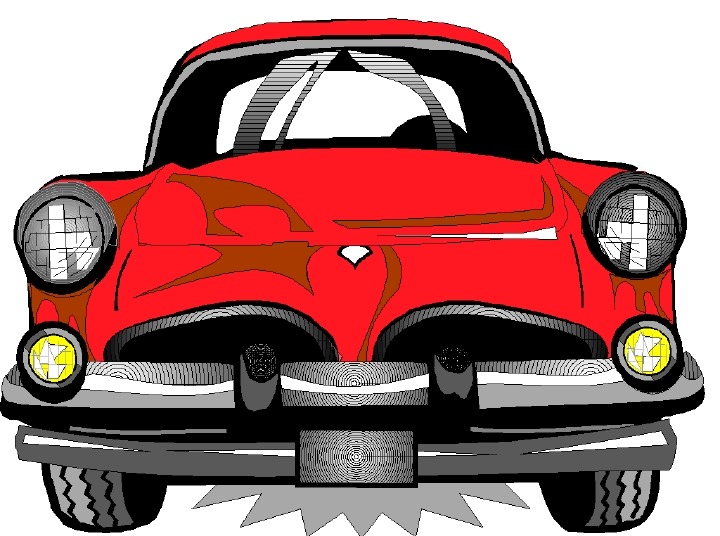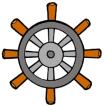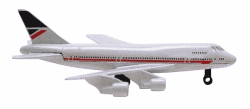Adjectives and adverbs
The order of adjectives is as follows:
Opinion
Size/shape
Age
Colour
Origin
Material
Usage
Eg. She has a nice round old brown Italian wooden poker table
We form adverbs from adjectives by adding -ly at the end of an adjective
Eg. Nice - nicely: she is nice - she sings nicely
From adjectives ending with -ly we form adverbs by adding a phrase `in a …way'
Eg. Friendly - She welcomed us in a friendly way
We use adjectives in the function of adverbs with verbs of senses (look, smell, feel, taste, sound) eg. She is beautiful - She looks beautiful
Some adverbs are the same as adjectives : eg. Hard - this task is hard - he has to work hard (not hardly) zadanie jest ciężkie-on musi ciężko pracować (hardly = mało co!); fast
The adverb formed from the adjective good is well. Eg. She is good at painting - She paints well
Put the adjectives in the correct order. (Ułóż przymiotniki we właściwej kolejności)
new a wooden small table black
………………………………………..
paper rectangular three books
………………………………………..
blue an scarf woolen ugly
………………………………………..
golden a of earrings antique pair
………………………………………..
plate big a china
………………………………………..
narrow path country stone a
………………………………………..
shoes some new ballet shining
………………………………………..
silk short a dress red
………………………………………..
of trousers new pair a black
………………………………………..
squeezed cold juice a freshly jug lemon of
………………………………………..
Math the adjectives with their extreme synonyms. (połącz przymiotniki z ich mocnymi wersjami)
Warm exhausted
Large fantastic
Tired terrifying
Scary depressed
Cold tiny
Interesting terrible
Sad boiling
Good gigantic
Bad freezing
Small exciting
Rewrite the sentences using the words given (Przepisz zdania używając podanych wyrazów)
They lived together and were happy
Happily
………………………………………………
This has been hard work for you
Worked
………………………………………………
The child is a slow learner
Learns
………………………………………………
She is a good tennis player
Plays
………………………………………………
He is a fluent German speaker
Speaks
………………………………………………
She called and said she was ill
Well
………………………………………………
Her performance was beautiful
Performed
………………………………………………
Tom is a careless driver
Drives
………………………………………………
He didn't do well at the exam
Did
………………………………………………
We were successful in the training
Completed
………………………………………………
Match the words with the definitions
Street sign / verge / hedge / subway / kerb / gate / lamp-post / post-box / pavement
pedestrian crossing
A place on the street where it is safe to cross
A long stick with a light bulb at the top
A place along the street for people to walk
A fence made of plants
A door in a fence or wall
A structure separating a street from a pavement
A notice showing the direction to a place
A structure where you put letters
A system of underground crossings
A line of grass along the street
What objects do you need in these situations? (Jakich przedmiotów potrzebujesz w podanych sytuacjach)
Binoculars / tin-opener / compass / thermometer / hairdryer / scissors / iron / razor /
lawn-mower / pump
All your tyres are flat
You want to eat some sardines
The grass in your garden needs cutting
You need to shave
Your hair is wet
You need to cut a shape of paper
You want to see if you have a fever
You want to see what the neighbour opposite your flat is doing
You are lost in a forest
You need to have a smart shirt for a meeting
Name the parts of vehicles (nazwij części pojazdów)

5


3
4 7
1 6
2 8

14

11
9
10 13
12 15
…………….
…………….
…………….
…………….
…………….
…………….
…………….
…………….
…………….
…………….
…………….
…………….
…………….
…………….
Match the means of transport with their definitions (połącz środki transportu z ich definicjami)
hovercraft
coach
tram
train
yacht
metro
tank
canoe
raft
lifeboat
a narrow vehicle used to move along rivers using paddles
a means of public transport within cities on rails
a big vehicle used in war
a means of mass transport that flies just above water surface
a type of boat with sails
a type of train which runs under ground
a type of bus that circulates between cities
a type of boat that rescues people from sinking ships
a means of public transport than runs between cities on rails
a primitive type of boat
KEY
I
A small new black wooden table
Three rectangular paper books
an ugly blue woolen scarf
a pair of antique golden earrings
A big china plate
A narrow stone country path
some new shining ballet shoes
A short red silk dress
A pair of new black trousers
A jug of cold freshly squeezed lemon juice
II
Warm - boiling
Large - gigantic
Tired - exhausted
Scary - terrifying
Cold - freezing
Interesting - exciting
Sad - depressed
Good - fantastic
Bad - terrible
Small -tiny
III
They lived together happily
You worked hard
The child learns slowly
She plays tennis well
He speaks German fluently
She called and said she wasn't well
She performed beautifully
Tom drives carelessly
He did badly at the exam
We completed the training successfully
IV
pedestrian crossing
lamp-post
pedestrian crossing
hedge
gate
kerb
street sign
post box
subway
verge
V
pump - pompka - złapałeś gumę
tin-opener - otwieracz do puszek
lawnmower - kosiarka
razor - maszynka do golenia - musisz się ogolić
hairdryer - suszarka do włosów
scissors - nożyczki
thermometer - termometr
binoculars - lornetka - chcesz zobaczyć co robi sąsiad z naprzeciwka
compass - kompas
iron - żelazko - potrzebujesz eleganckiej koszuli na spotkanie
VI.
tyre - opona
bumper - zderzak
head light - reflector
indicator - migacz
windshield - przednia szyba
steering wheel - ster
oar - wiosło
fuselage - kadłub
wing - skrzydło
undercarriage - podwozie
tail - ogon
wheel - koło
spokes - szprychy
saddle - siodełko
chain - łańcuch
VII.
hovercraft d - wodolot
coach g - autokar
tram b - tramwaj
train i - pociąg
yacht e - jacht
metro f
tank c - czołg
canoe a - kajak
raft j - tratwa
lifeboat h - szalupa ratunkowa
|
Bo nauka nie musi być nudna!
Wyszukiwarka
Podobne podstrony:
lesson4
Lesson15
face painting lesson 3 id 16748 Nieznany
2 3 Unit 1 Lesson 2 – Master of Your Domain
konspekty gimnazjum Lesson Plan 3
grammar lesson mk
konspekty gimnazjum Lesson Plan Ib
konspekty gimnazjum lesson plan 5
GE Georgian Language Lessons
lesson 9
Lessons in Electric Circuits Vol 5 Reference
lesson3
Lesson 14 MY, MINE esp
Lesson 24
Comparatives and Superlatives LESSON
ho ho ho lesson 1 v.2 student's worksheet for 2 students, ho ho ho
grammar lesson zaliczenie MI
Inspiration 3 Unit 7 Lesson 1 (2)
Unit 5 Lesson 2
więcej podobnych podstron